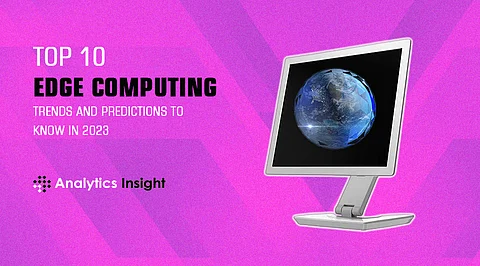
- InsightsInsights
- CryptocurrenciesCryptocurrencies
- Stocks
- White Papers
- IndustryIndustry
- GeographyGeography


Edge computing is gaining momentum in Industry 4.0 with its effective data management with cutting-edge technologies. More and more applications are needed to be deployed at the edge, and IT managers scramble to keep up and accelerate their digital transformation strategies. In fact, by 2023, more than 50% of new enterprise IT infrastructure deployments will take place at the edge of the network instead of central data centers. Let's explore some of the top edge computing trends and predictions to look out for in 2023.
Edge computing will be all around and down on the farm: Upgraded edge computing capabilities open up the technology for more industries in far-reaching places. Agriculture shows some of the most promising edge computing. Farmers use edge technology to track water use, decide where to put fertilizer and in what amounts and monitor crop growth.
Edge meets more AI/ML: Machine learning at the edge will enable faster decision-making. Moreover, the amalgamation of edge and AI will further drive real-time personalization. Advanced policy controls will enable greater confidence in the actions made as a result of the data collected and interpreted from the edge.
The direction of the edge, simply put, is more: While edge computing was once considered a necessity for only elite Fortune 100 companies, it is now becoming essential for all companies, both large and small. Gartner predicts edge computing will grow 75% by 2025.
Edge computing will unite IT and OT to drive industrial transformation: Edge computing enables data to be collected and processed closer to where it's being generated so it can be immediately put to use. This trend accelerates further as other industries embrace edge systems so they can bridge the IT/OT gap.
Edge innovations such as zero-touch provisioning will ease the IT staffing crisis: Zero-touch provisioning promises to be a game changer in enabling resource-strapped organizations to remotely administer their systems without having to hire additional specialized IT workers.
Customers seeking alternatives to cloud computing: Data often needs to be processed at the edge due to performance and the cost of cloud computing can be prohibitive. The edge needs us to be able to process huge amounts of data in real-time and send only archived.
The edge environment expands: The edge could be a ruggedized gateway placed in close physical proximity to remote sensors or it could be a local data center. Increasingly edge also could mean distributed cloud edge.
The rise of edge containers: Containerization involves packaging applications in a way that isolates software and its dependencies from other components. Containers are highly portable and lightweight, which makes them easy to deploy and maintain. Unlike traditional cloud containers, edge containers run at the edge of the network.
Edge computing will unlock more value from 5G: Organizations are investing in 5G to streamline data collection, power IoT devices, and enhance digital experiences. Edge computing also helps with use cases like virtual and augmented reality and self-driving cars which require processing heavy amounts of real-time data with minimal latency.
Edge eases connected ecosystem adoption: Edge not only enables and enhances the use of IoT but also makes it easier for organizations to participate in the connected ecosystem with minimized network latency and bandwidth issues. Enterprises can now move into profitable and fast-streaming markets with the power of edge and easy data processing.
Bitcoin at Crisis! Fails to Regain Traders' Faith After Slipping Through US$24K
Google is Infusing LLM into Home Robots! Where is it Taking us?
Why AIOps Can Be Essential for Engineering in The Future
PyPi Python Packages are the New Source of Supply Chain Attacks
Zuckerberg's Metaverse Avatar again Screams 'Basic'! Gets Twitter Criticism
Tornado Cash has Made Normal DeFi Founders Vulnerable and Incapable
Top 10 Convolutional Neural Network Questions Asked in FAANG Interviews
If Constipation is What Bothers You, Make a Visit to this AI Doctor
